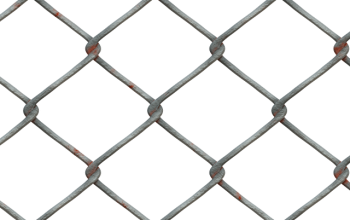Farmers in Ontario require strategic farm fencing solutions that balance animal welfare and productivity across diverse landscapes and climates. Durable materials and well-designed fences protect livestock from predators, manage movement, reduce stress, and mark property boundaries. Traditional wood posts and wire fences coexist with modern electric fencing systems, catering to various needs and budgets. High-tensile fencing and electric deterrents enhance management efficiency and animal safety, streamlining farm operations across Ontario. Strategic fence installation and regular maintenance are vital for maintaining effectiveness, contributing to successful agricultural practices.
In Ontario, effective livestock management is key to successful farming. With vast landscapes and diverse climates, farmers require robust farm fencing solutions to control and protect their animals. This article explores the critical role of fencing in managing livestock, highlighting its impact on animal behavior and overall farm efficiency. We’ll delve into various types of livestock fencing solutions, offering insights on choosing the right fit while providing implementation and maintenance tips for optimal results in Ontario farms.
- Understanding Livestock Management in Ontario Farms
- The Role of Farm Fencing in Effective Animal Control
- Types of Livestock Fencing Solutions Available
- Implementing and Maintaining Farm Fencing for Optimal Results
Understanding Livestock Management in Ontario Farms
Livestock management on Ontario farms involves a delicate balance between ensuring animal welfare and maximizing productivity. With diverse landscapes, from rolling hills to dense forests, farmers need versatile and effective farm fencing solutions tailored to their specific needs. Effective livestock fencing is more than just keeping animals contained; it facilitates efficient movement, reduces stress, and provides necessary shelter.
Understanding the unique challenges posed by Ontario’s climate and terrain is crucial for selecting appropriate farm fencing. Farmers must consider durability against harsh winters and unpredictable summers, as well as the potential for wildlife intrusion. By investing in high-quality, well-designed livestock fencing, Ontario farms can enhance animal health, improve management practices, and ultimately contribute to the sustainability of agriculture in the region.
The Role of Farm Fencing in Effective Animal Control
Effective animal control is a cornerstone for any successful agricultural operation, and one of the most vital tools in this regard is farm fencing. In Ontario, where diverse landscapes and climates present unique challenges for livestock management, well-designed farm fencing plays a crucial role in keeping animals safe and secure. Properly installed fences not only define property boundaries but also serve as a physical barrier against predators and wayward animals, ensuring the safety of both livestock and neighbouring properties.
Farm fencing solutions come in various types, each offering distinct advantages. From traditional wood posts and wire fences to modern electric fencing systems, these options cater to different needs and budgets. Electric fencing, for instance, provides a humane yet effective deterrent for livestock, allowing them access to vast grazing areas while keeping them within designated boundaries. This flexible approach is particularly beneficial in Ontario’s varied terrain, offering both efficiency and adaptability for efficient animal management practices.
Types of Livestock Fencing Solutions Available
In Ontario, farmers have a wide array of livestock fencing solutions to choose from when it comes to managing their animals effectively. Traditional options like wood and barbed wire remain popular for their durability and cost-effectiveness. However, modern farm fencing has evolved significantly with innovative materials and designs tailored to specific animal behaviors and landscape challenges.
One such advancement is high-tensile fencing, which uses a stronger steel cable tensioned along posts, offering greater strength and flexibility compared to traditional wire. This type of livestock fencing is particularly effective for keeping larger animals like cattle in check while allowing easier access for farmers. Additionally, electric fencing systems provide a gentle but effective shock deterrent, ideal for separating herds or controlling smaller livestock such as sheep and goats. These solutions not only enhance the efficiency of animal management but also contribute to the overall safety and well-being of farm operations in Ontario.
Implementing and Maintaining Farm Fencing for Optimal Results
Implementing farm fencing is a strategic move for Ontario farmers aiming to manage their livestock effectively. The right type of fence, whether it’s a traditional post-and-rail or a modern electric fence system, plays a pivotal role in containing animals while allowing for easy access and monitoring. Proper installation involves considering factors like terrain, animal behavior, and desired level of security. For example, in areas with inclines, fencing should be securely anchored to prevent tipping, while for curious livestock, an additional electric layer can deter escape attempts.
Maintenance is key to ensuring farm fencing provides optimal results over the long term. Regular inspections are essential to identify any signs of damage or wear and tear, addressing issues promptly to maintain effectiveness. Cleaning posts and rails of debris, checking fence connections, and tightening loose components during seasonal changes are all part of a comprehensive maintenance routine. By investing time in these tasks, farmers can extend the life of their fencing while keeping livestock securely contained, enhancing overall farm management efficiency.
Livestock fencing is a critical component of successful animal management on Ontario farms. By understanding the unique challenges of the region, farmers can select the most suitable fencing solutions from the various options available. Effective farm fencing not only keeps animals contained but also promotes their overall well-being and productivity. With proper implementation and regular maintenance, the right livestock fencing can revolutionize how farms operate in Ontario’s diverse landscape.




